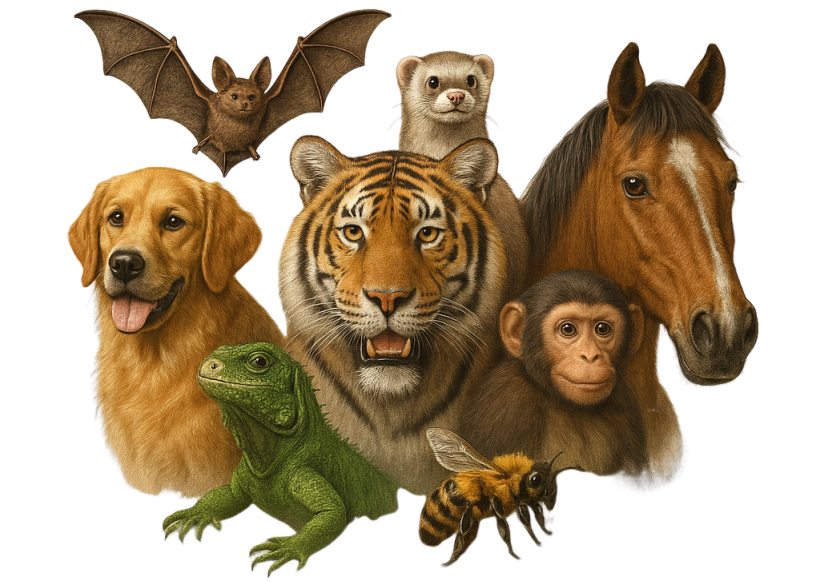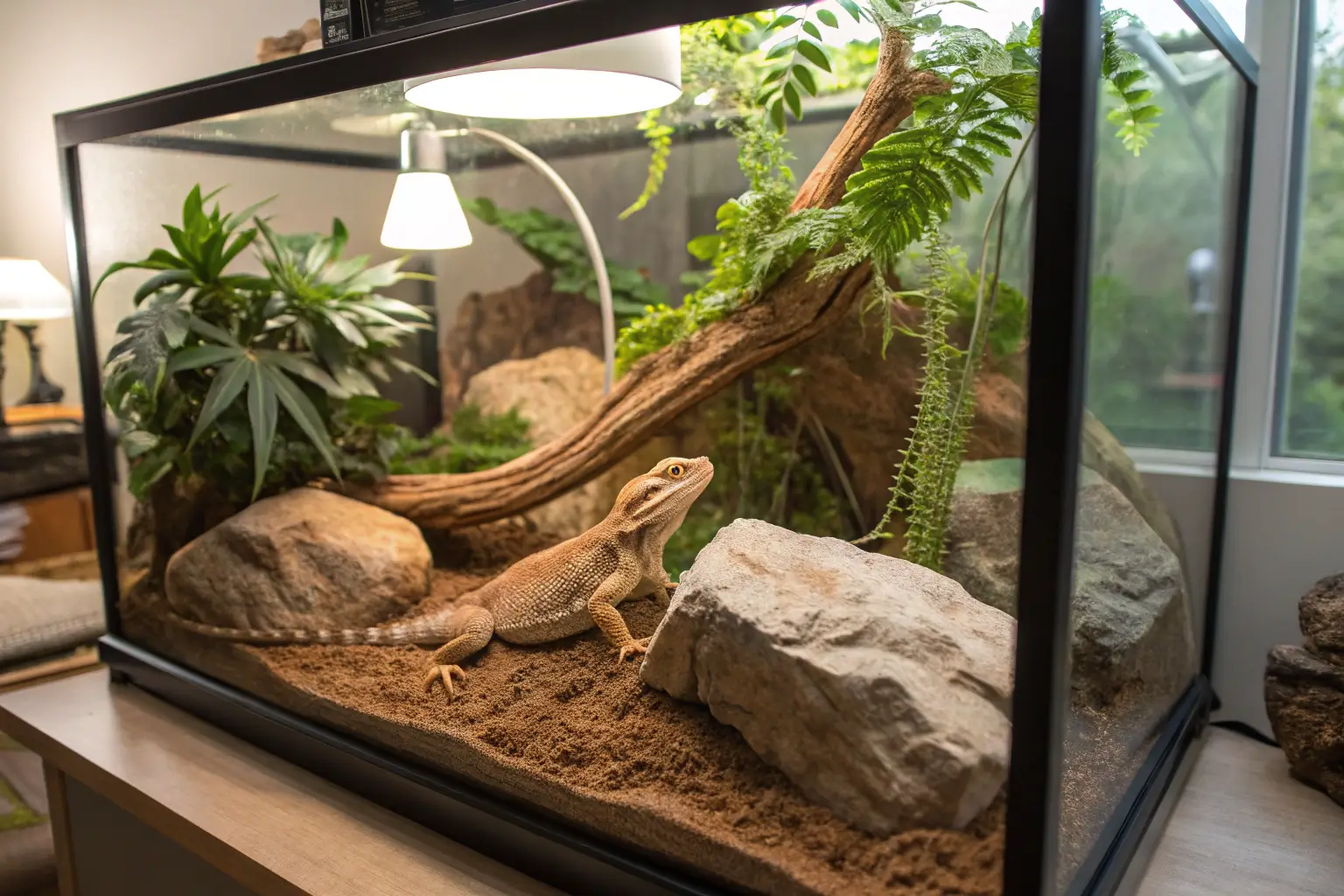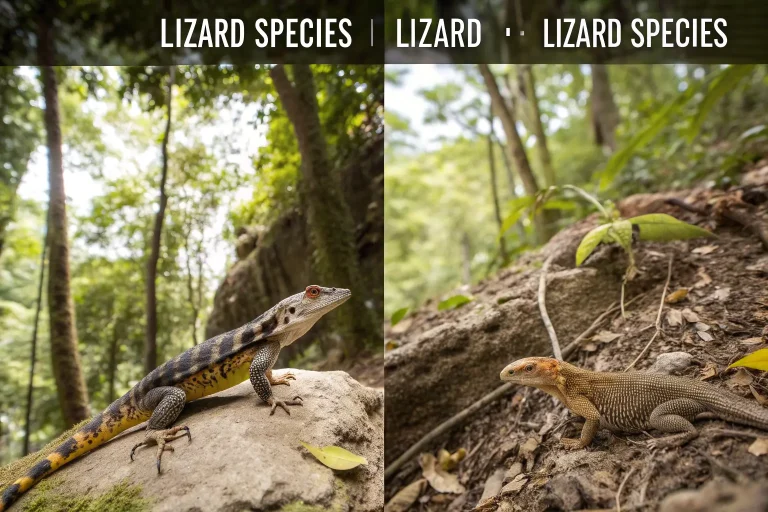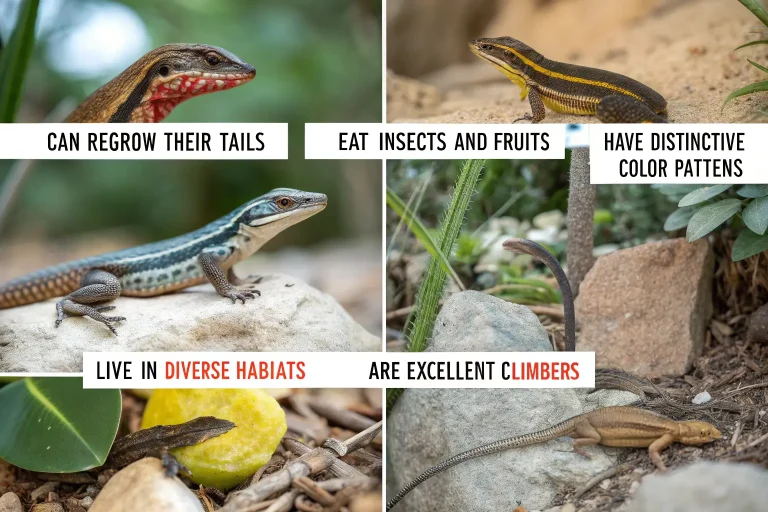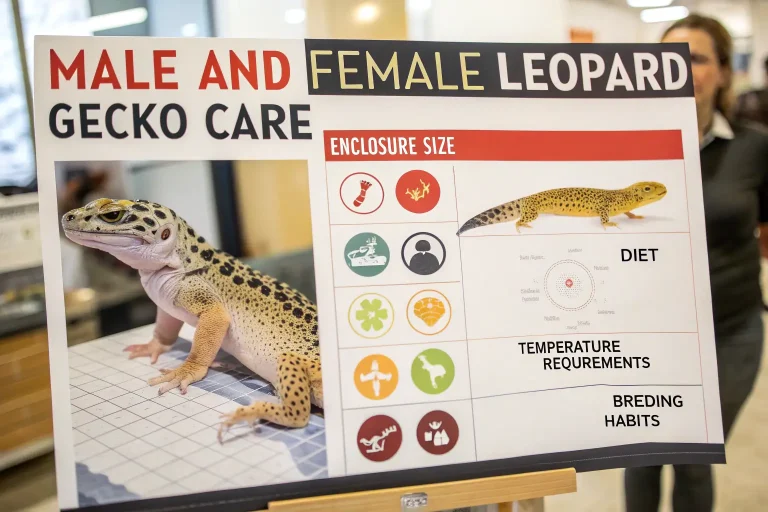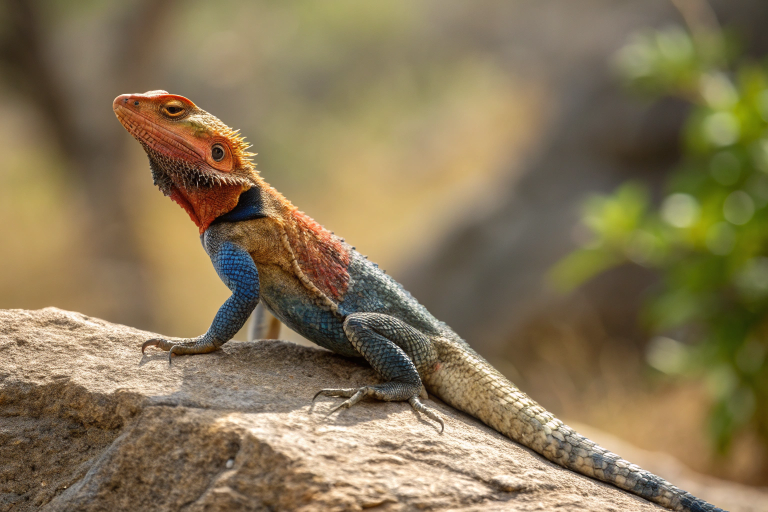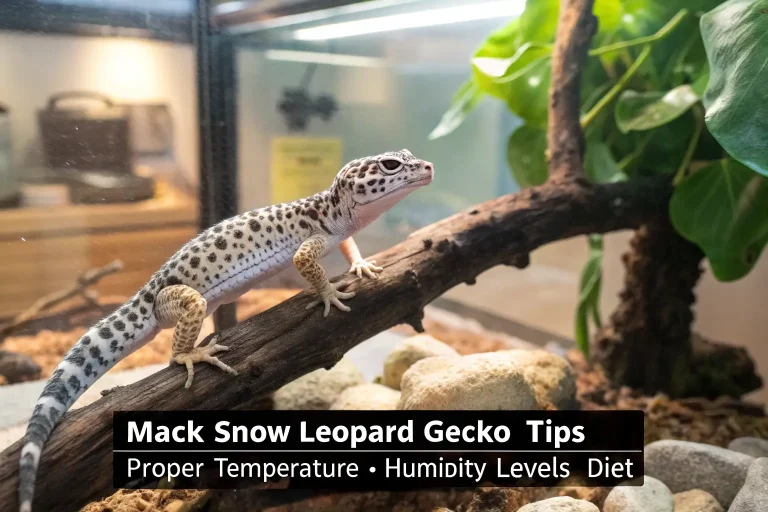Pet Lizards 101: How to Create the Perfect Habitat for Your Scaly Pal
Are you ready to welcome a scaly friend into your home? Pet lizards make fascinating companions, but creating the right environment is crucial for their health and happiness. Unlike traditional pets, lizards have specific habitat requirements that mimic their natural environments. From temperature gradients to proper lighting, every detail matters when designing your pet lizard’s home. This comprehensive guide will walk you through everything you need to know about creating the perfect habitat for your cold-blooded companion, ensuring they thrive under your care for years to come.
Introduction
Lizards represent one of the most diverse reptile groups on the planet, with over 6,000 species ranging from tiny geckos to massive monitors. As pet lizards have grown in popularity, so has our understanding of their complex care requirements. Creating an appropriate habitat isn’t just about aesthetics—it’s essential for your lizard’s physical and psychological well-being.
Many first-time reptile owners are surprised to learn that improper habitat setup is the leading cause of health problems in pet lizards. From metabolic bone disease caused by insufficient UVB lighting to respiratory infections from inadequate humidity levels, the consequences of habitat mistakes can be serious.
Did you know that some lizard species can recognize their owners and even display unique personalities? Your investment in creating the perfect lizard home will reward you with a healthier pet and a stronger human-reptile bond.
Species Overview
Scientific Name
While “lizards” encompass thousands of species across numerous families, popular pet lizards typically come from several main taxonomic groups:
- Bearded Dragons: Pogona vitticeps
- Leopard Geckos: Eublepharis macularius
- Crested Geckos: Correlophus ciliatus
- Blue-Tongued Skinks: Tiliqua scincoides
- Green Anoles: Anolis carolinensis
- Chinese Water Dragons: Physignathus cocincinus
Physical Characteristics
Pet lizards vary dramatically in size, color, and features. Bearded dragons typically reach 16-24 inches and display impressive spiny beards when threatened. Leopard geckos remain smaller at 8-10 inches with distinctive spotted patterns. Blue-tongued skinks feature their namesake cobalt tongue, while crested geckos showcase elaborate head crests.
Most species exhibit sexual dimorphism, with males often displaying brighter colors, head crests, or femoral pores. Many lizards can also change colors based on temperature, mood, or reproductive status—a fascinating adaptation that makes them particularly engaging pets.
Subspecies
Several popular pet lizard species have notable subspecies:
- Bearded Dragons: Ranging from the classic Central (Pogona vitticeps) to the rarer Eastern (Pogona barbata)
- Blue-Tongued Skinks: Including Northern, Eastern, Indonesian, and Irian Jaya varieties, each with distinct care requirements
- Day Geckos: With over a dozen subspecies varying in color from emerald green to turquoise with red markings
Understanding your lizard’s exact subspecies is critical for proper habitat design, as requirements may vary significantly even within closely related groups.
Habitat and Distribution
Natural Habitat
The diverse world of pet lizards spans nearly every terrestrial ecosystem on Earth:
- Desert-dwelling species like leopard geckos and bearded dragons evolved in arid regions with extreme temperature fluctuations and minimal vegetation
- Tropical species such as day geckos and crested geckos come from humid rainforests with stable temperatures and abundant foliage
- Semi-aquatic lizards like water dragons require swimming areas and high humidity
- Arboreal species including many chameleons and geckos spend most of their lives in trees, rarely descending to ground level
Your lizard’s natural habitat provides the blueprint for their captive environment. An African desert species will suffer in a tropical setup, while rainforest lizards will dehydrate in arid conditions.
Geographic Range
Popular pet lizards originate from specific regions worldwide:
- Bearded Dragons: Central Australia’s arid regions
- Leopard Geckos: Rocky deserts of Afghanistan, Pakistan, and northwestern India
- Crested Geckos: New Caledonia’s tropical forests
- Blue-Tongued Skinks: Australia, Indonesia, and New Guinea
- Green Anoles: Southeastern United States and Caribbean islands
- Water Dragons: Eastern and southeastern Asia, particularly China and Thailand
This geographic diversity explains why different lizard species require such varied care parameters. The conditions in Australia’s outback versus New Caledonia’s humid forests create entirely different habitat needs.
Adaptations
Pet lizards display remarkable adaptations to their native environments:
- Desert species have water-conserving adaptations like minimal skin exposure and concentrated urine
- Tropical species may have specialized toe pads for climbing smooth surfaces
- Chameleons evolved prehensile tails and zygodactylous feet for tree-dwelling
- Many lizards have specialized eyelids, ear coverings, or nasal structures to prevent sand or water infiltration
Understanding these adaptations helps you replicate critical habitat features. For instance, desert species need a dry environment with basking spots, while arboreal species require vertical climbing structures with secure perches.
Diet and Feeding Habits
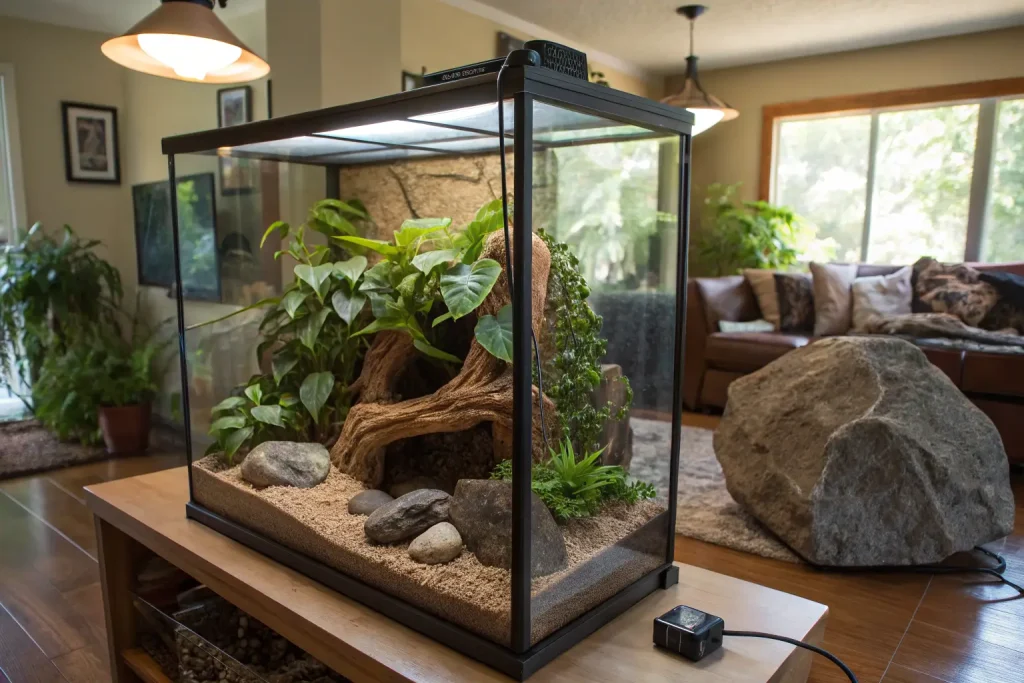
What They Eat
Pet lizards fall into three primary dietary categories:
Insectivores: Species like leopard geckos and anoles consume primarily insects. Crickets, mealworms, dubia roaches, and waxworms form the backbone of their diet.
Omnivores: Bearded dragons and blue-tongued skinks consume both animal and plant matter. Their diet should include insects, leafy greens, vegetables, and occasional fruits.
Herbivores: Green iguanas and uromastyx lizards primarily eat plant material, requiring varied leafy greens, vegetables, and limited fruit.
Regardless of category, most pet lizards require calcium and vitamin supplementation to prevent nutritional deficiencies in captivity.
Hunting or Foraging Behavior
Observing your pet lizard’s feeding behavior provides fascinating insights into their evolutionary history:
- Ambush predators like leopard geckos remain motionless until prey comes within striking distance
- Active hunters like bearded dragons will chase moving prey items
- Foragers such as blue-tongued skinks naturally search for food throughout their environment
Recreating natural feeding opportunities enriches your pet’s life. Consider puzzle feeders, scattered food items, or live plants (for herbivores) to encourage natural behaviors.
Dietary Needs
Proper nutrition for pet lizards requires attention to:
- Calcium-to-phosphorus ratios (ideally 2:1)
- Vitamin D3 supplementation (especially for species without UVB exposure)
- Protein content appropriate for species (higher for juveniles and insectivores)
- Variety to prevent nutritional deficiencies
- Hydration through drinking water, misting, or food moisture
Diet quality directly affects everything from bone development to reproductive success. Research your specific species’ requirements and seasonal variations to create a comprehensive feeding plan.
Behavior and Social Structure
Social Behavior
Understanding social dynamics is crucial when keeping pet lizards:
- Solitary species like leopard geckos and crested geckos typically should be housed individually to prevent stress and aggression
- Semi-social species such as bearded dragons may tolerate conspecifics in sufficiently large enclosures, though males typically cannot cohabitate
- Few lizard species are truly social; most interactions in the wild revolve around breeding or competition
Misunderstanding social needs leads to common housing mistakes. Multiple males of territorial species like anoles or bearded dragons will fight, potentially causing serious injuries or chronic stress.
Communication
Pet lizards communicate through sophisticated channels:
- Visual displays including head-bobbing, arm-waving, and color changes
- Body postures signaling submission, aggression, or reproductive receptivity
- Scent marking via femoral pores or cloacal rubbing
- Limited vocalizations (primarily in geckos)
Learning to interpret these signals helps you understand your pet’s state of mind. For example, a bearded dragon with a darkened beard and flattened body is displaying stress or aggression, while slow arm-waving often indicates submission.
Mating and Reproduction
Reproductive behaviors in pet lizards vary dramatically:
- Many species are oviparous (egg-laying), while others are viviparous (live-bearing) or ovoviviparous (retaining eggs internally until hatching)
- Breeding seasons typically correlate with environmental cues like temperature changes or rainfall patterns
- Courtship behaviors range from elaborate displays to aggressive pursuit
- Parental care is limited in most species, though some skinks and other advanced lizards provide offspring protection
Inadvertent breeding can occur when housing males and females together, so be prepared for potential offspring if you maintain mixed enclosures.
Conservation Status
Endangerment Level
While many common pet lizards maintain stable wild populations, others face significant threats:
- Bearded dragons: Least Concern (IUCN Red List)
- Leopard geckos: Not Evaluated, but generally stable
- Crested geckos: Vulnerable due to habitat loss
- Blue-tongued skinks: Status varies by subspecies, with some vulnerable
- Green iguanas: Least Concern overall, but declining in parts of their range
Always research your potential pet’s conservation status and ensure it was captive-bred rather than wild-caught to avoid contributing to population declines.
Threats
Common threats to wild lizard populations include:
- Habitat destruction from urbanization, agriculture, and resource extraction
- Climate change affecting temperature-dependent sex determination and habitat suitability
- Collection for pet trade (particularly species with limited captive breeding success)
- Invasive predators and competitors
- Disease spread, including emerging pathogens
Understanding these threats helps responsible pet lizard keepers make ethical choices about species selection and sourcing.
Conservation Efforts
Several initiatives benefit wild lizard populations:
- Protected area designations in biodiversity hotspots
- Captive breeding programs for endangered species
- Habitat restoration projects
- Trade regulations through CITES (Convention on International Trade in Endangered Species)
- Research into emerging threats and management strategies
Responsible pet lizard ownership contributes to conservation by reducing demand for wild-caught specimens and raising awareness about reptile conservation issues.
Interesting Facts
- The tuatara of New Zealand appears lizard-like but belongs to a distinct reptile order that diverged from lizards over 250 million years ago
- Some lizards, like certain skinks and geckos, can detach their tails when threatened and later regenerate them
- The smallest lizard species is the dwarf gecko (Sphaerodactylus ariasae), measuring just 16mm
- Bearded dragons can run on their hind legs, resembling tiny dinosaurs
- Many pet lizards can recognize individual humans through sight and scent
- Certain species, including some skinks, exhibit monogamy and long-term pair bonding
- Chameleons’ tongues can accelerate five times faster than a fighter jet, reaching their prey in less than 0.07 seconds
- The Komodo dragon, world’s largest lizard, can smell carrion from nearly 6 miles away
Tips for Caring for Pet Lizards
Creating the ideal habitat for your pet lizard requires attention to several critical elements:
Temperature Regulation
Nearly all lizards require a temperature gradient:
- Basking zone: Providing species-appropriate hot spots (95-110°F for bearded dragons, 85-90°F for leopard geckos)
- Ambient temperature: Maintaining proper warm-side temperatures (80-85°F for most species)
- Cool zone: Ensuring a retreat area (75-80°F) allows thermoregulation
- Night drop: Most species benefit from temperature reduction at night (65-75°F depending on species)
Use thermometers at both the cool and warm ends, plus a temperature gun to check basking spots accurately. Inadequate temperature gradients quickly lead to digestive issues, immune suppression, and stress behaviors.
Lighting Requirements
Appropriate lighting creates crucial environmental cues:
- UVB lighting: Essential for most species for vitamin D3 synthesis and calcium metabolism (10-12% UVB for bearded dragons, 5-7% for forest species)
- Day/night cycle: Consistent 12-14 hour photoperiods simulate natural conditions
- Full-spectrum lighting: Provides visual benefits and supports natural behaviors
- Night viewing: Use red or blue night bulbs if observation after dark is desired
Replace UVB bulbs every 6-12 months, as they lose effectiveness before visibly burning out. Position them at manufacturer-recommended distances to prevent eye damage or inadequate exposure.
Substrate Choices
Appropriate bedding addresses both safety and naturalistic needs:
- Desert species: Reptile carpet, paper towels, or fine-particle natural substrates like play sand mixed with soil
- Tropical species: Coconut fiber, cypress mulch, orchid bark, or bioactive soil mixtures
- Burrowing species: Deeper substrate layers (4+ inches) allowing tunnel construction
- Avoid: Calcium sand, wood shavings with phenols, or loose substrates for lizards prone to accidental ingestion
Many experienced keepers prefer bioactive substrates with microfauna and live plants to create self-maintaining ecosystems that benefit pet lizard health.
Humidity Control
Maintaining proper moisture levels prevents numerous health issues:
- Desert species: 20-40% ambient humidity with higher microclimate in moist hide
- Tropical species: 60-80% humidity maintained through misting, foggers, or drippers
- Humidity gradients: Providing varied moisture levels within the enclosure
- Measurement: Use hygrometers in multiple locations to monitor levels accurately
Improper humidity is a leading cause of respiratory infections, incomplete shedding, and kidney problems in pet lizards. Misting frequency, substrate moisture, and ventilation must work together to maintain appropriate levels.
Enclosure Size and Design
Appropriate housing considers natural behaviors:
- Minimum sizes: Generally follow the “length of enclosure = 2x lizard length” rule, with greater width for terrestrial species and height for arboreal ones
- Climbing opportunities: Branches, vines, or cork bark allowing vertical space use
- Hiding places: Multiple secure retreats in both warm and cool areas
- Visual barriers: Structures creating visual breaks for security
- Activity space: Open areas allowing natural movement patterns
Larger enclosures generally lead to healthier, more active pet lizards displaying natural behaviors. Even species traditionally kept in smaller setups benefit from expanded territories.
Health Monitoring
Regular observation helps catch issues early:
- Normal weight: Most pet lizards should maintain consistent weight with slight seasonal variations
- Clear eyes and nose: No discharge, bubbles, or respiratory sounds
- Complete shedding: Skin should come off in large pieces without retained sections
- Regular elimination: Waste should be well-formed and consistent
- Activity levels: Consistent alertness during active periods
- Appetite: Stable feeding response appropriate to species
Establish baseline behaviors and appearances for your specific pet, as “normal” varies significantly between lizard species and individuals.
Common Health Issues
Watch for these frequently encountered problems:
- Metabolic bone disease: From insufficient calcium, vitamin D3, or UVB exposure
- Respiratory infections: Often from improper temperature or humidity
- Impaction: Intestinal blockage from inappropriate substrate or oversized food items
- Parasites: Internal or external parasites causing weight loss or skin issues
- Egg binding: Reproductive complications in female lizards
- Thermal burns: From unprotected heat sources or equipment malfunctions
Most pet lizard health problems trace back to husbandry issues, emphasizing the importance of proper habitat setup.
Role in the Ecosystem
Ecological Importance
Wild lizards fulfill numerous ecological functions:
- Insect control: Many species consume large quantities of insects, helping regulate populations
- Seed dispersal: Fruit-eating lizards spread plant seeds through their droppings
- Prey base: Lizards provide food for numerous predators including birds, snakes, and mammals
- Nutrient cycling: Lizard activity and waste contribute to ecosystem nutrient flow
- Indicator species: Lizard population health often reflects broader environmental conditions
Understanding these roles helps appreciate the evolutionary adaptations your pet lizard displays, even in captivity.
Impact of Decline
Lizard population declines create ecosystem ripple effects:
- Insect population explosions following insectivorous lizard declines
- Changed plant community composition when seed-dispersing species disappear
- Predator population shifts impacting additional species
- Altered nutrient cycling affecting soil health and plant communities
These ecological connections highlight why lizard conservation matters beyond the species themselves.
Conclusion
Creating the perfect habitat for your pet lizard represents both science and art. By understanding your specific species’ needs—from precise temperature gradients to appropriate humidity levels, from nutritional requirements to behavioral enrichment—you can provide an environment where your scaly companion truly thrives.
Remember that habitat design should evolve throughout your lizard’s life. Juveniles may need smaller enclosures with more security, while adults benefit from expanded territories. Breeding individuals require specialized setups, and aging lizards might need accessibility modifications.
Most importantly, continue educating yourself about your particular species. Reptile husbandry knowledge advances rapidly, with new research regularly improving our understanding of pet lizard needs. Join reptile forums, connect with experienced keepers, and stay current with veterinary recommendations to ensure your habitat provides everything your lizard needs for a long, healthy life.
By investing in proper habitat design now, you’ll enjoy years of fascinating interaction with your reptilian companion while providing them the best possible quality of life.
Frequently Asked Questions
What size tank does my pet lizard need?
Tank size depends on your lizard species. As a general rule, the enclosure length should be at least twice your adult lizard’s total length. Width should be at least the lizard’s length, and height should be 1-2x their length for terrestrial species and 2-3x for arboreal species. Bearded dragons typically need 40+ gallon tanks, while leopard geckos require at least 20 gallons, and larger species like iguanas need custom enclosures measuring 6+ feet in at least one dimension.
How do I maintain proper temperature in my lizard’s habitat?
Create a temperature gradient using multiple heat sources. Install a primary basking lamp at one end and measure temperatures with digital thermometers at both warm and cool ends. Use thermostats to prevent overheating, and incorporate heat mats or ceramic heat emitters for nighttime warmth without light. Monitor the basking surface with a temperature gun to ensure it reaches species-appropriate temperatures. Adjust lamp height or wattage as needed to achieve the perfect gradient.
Do all pet lizards need UVB lighting?
Most, but not all. Desert species like bearded dragons absolutely require UVB for vitamin D3 synthesis and calcium metabolism. Forest floor dwellers like crested geckos can survive without it when provided dietary D3 supplements, though many experts still recommend low-level UVB for optimal health. Nocturnal species like leopard geckos benefit from low-output UVB even though they wouldn’t receive much in the wild. When in doubt, providing appropriate UVB lighting improves health and natural behavior in almost all captive lizards.
How often should I clean my lizard’s enclosure?
Implement a three-tier cleaning schedule: daily spot-cleaning of waste and uneaten food, weekly replacement of water and feeding dishes, and monthly deep-cleaning of the entire habitat (unless using a bioactive setup). Bioactive enclosures with cleanup crews require less frequent maintenance, as beneficial organisms process waste naturally. Immediately remove any soiled substrate, as reptile waste can quickly harbor harmful bacteria in the warm environment.
Can different lizard species live together?
In most cases, no. Different species have different temperature, humidity, and dietary requirements that cannot be optimally met in a single enclosure. Additionally, competition for resources and territorial behaviors can cause stress and injury. Even housing the same species together requires careful consideration of gender, age, and individual temperaments. The safest approach is one lizard per enclosure unless you’re an experienced keeper working with known compatible individuals.
